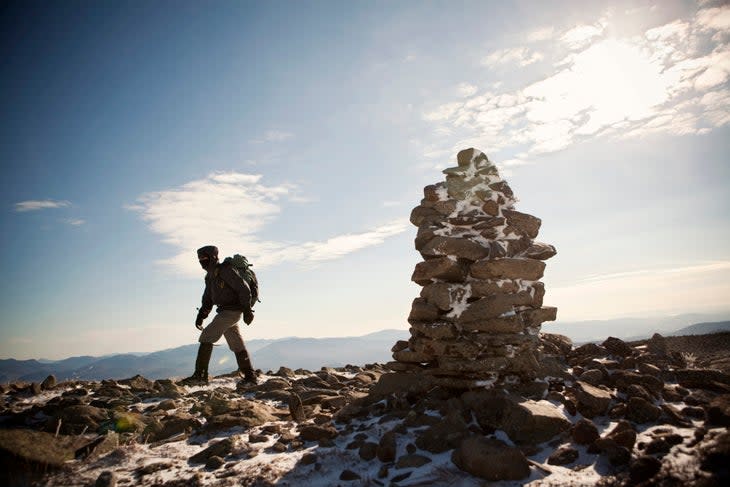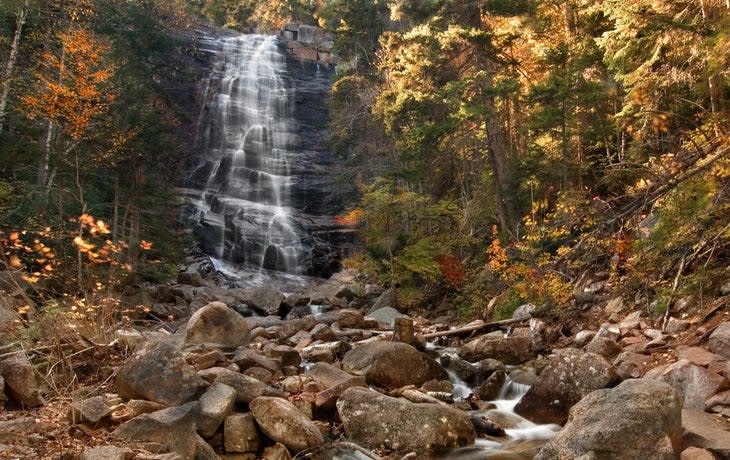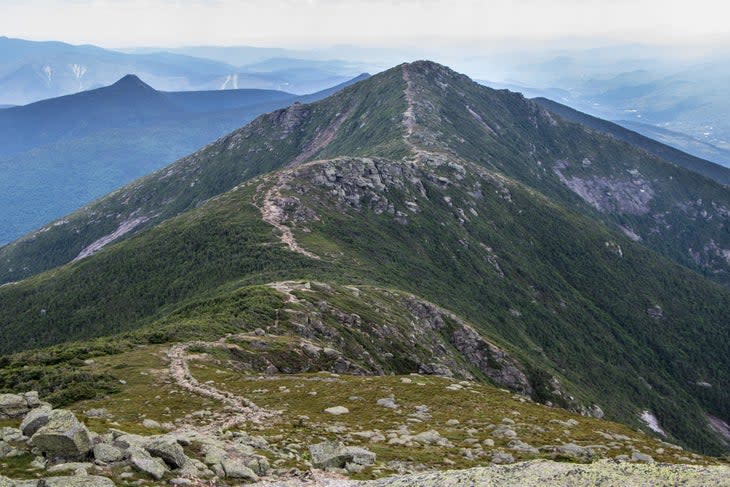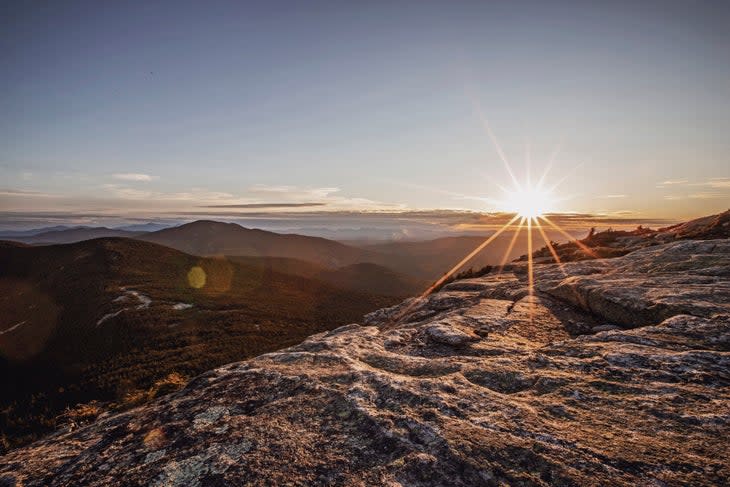The Best Hikes in the White Mountains
The White Mountains have a lot of history twisted into their rugged peaks and deep forests. They are the original home of the Abenaki, one of the first landscapes encountered by European settlers, and the setting for some of the country's earliest mountaineering feats--not to mention the fact that the ancient rocks in those mountains are some of the oldest on the continent. And let's be honest: The Northeast--one of the most densely-populated parts of the country--doesn't have a lot of 800,000-acre forests today. White Mountain National Forest, spread between northern New Hampshire and western Maine, is a gem of real wilderness, incredible beauty, and true remoteness that the big cities of the East Coast are lucky to have such easy access to.
Best Day Hikes in the White Mountains
One of the Whites’ real selling points is their accessibility. A day trip here from the Boston area is a common, easy trip to make. Options abound, from climbing one of the region's famous 4000-foot peaks to following a river in search of a swimming hole.
Best Alpine Dayhike: Mt. Moosilauke

Length: 7.1 miles
Elevation Gain: 2,500 feet
Trail Type: Out-and-back
Difficulty: Moderate
Climbing all of New Hampshire's 4,000-foot peaks is an objective that takes even locals years, and Moosilauke is one of the best summits to catch the bug on. The stunning 360-degree views at the end of the 3.6-mile (one-way) Gorge Brook Trail look east into the heart of the Range, and west toward the Green Mountains and, on a good day, New York's Adirondacks.
Best Waterfall Hike: Arethusa Falls

Length: 2.7 miles
Elevation Gain: 820 feet
Trail Type: Out-and-back
Difficulty: Easy
Arethusa Falls is pretty commonly considered the best waterfall in the State of New Hampshire. At roughly 200 feet fall, the broad cascade is a more-than-worthy prize at the end of a relatively easy 1.4-mile (one-way) hike, and it's a great place to cool down on a hot summer day.
Best Weekend Hikes in the White Mountains
Weekend adventures are where the White Mountains really shine. Get further into the mountains to experience the long, alpine ridgelines that make the region so famous, or wander endlessly down forested river valleys, fly rod in hand.
Best Scrambly Thru-Hike: The Presidential Traverse

Length: 19.5 miles
Elevation Gain: 8,300 feet
Trail Type: Thru-Hike
Difficulty: Difficult
The Prezi Traverse, as it's known, is the crown jewel of the Whites and is worthy of anyone's bucket list. A ridgeline of up to eight 4,000-footers, the trail breaks out of the treeline early on in the 20-mile thru-hike and doesn't relinquish the view-soaked meadows, summit scrambles, and alpine lakes until only the last few miles. Spend a night (or two) at one of a handful of campsites just below and along the ridge (Tent sites run by the Appalachian Mountain Club are first-come-first served and less than $20/night, and lean-to shelters in the northern part of the range run by the Randolph Mountain Club are $25/night for non-members) to savor the scenery and get to know every summit, including New Hampshire's tallest: Mt. Washington.
Best Hike for Ponds and Rivers: Zealand Falls via Ethan Pond

Length: 14.2 miles
Elevation Gain: 2,100 feet
Trail Type: Out-and-Back
Difficulty: Moderate
This 14.2-mile out-and-back begins with a steep climb to Ethan Pond, a secluded tarn tucked in a mountain valley below Mt. Willey (there's also a first-come, first-serve shelter hidden on the shore), before meandering passed Thoreau Falls and into the constricted Zealand Notch--an impressive valley between peaks, cut by rambling Whitewall Brook. The prize, Zealand Falls, drops 25 feet through a rocky cleft and sits just below the Appalachian Mountain Club's Zealand Falls Hut (reservations required).
Best Multiday hikes in the White Mountains
If you have the time to go a little deeper and longer, the Whites have some of the toughest hiking terrain anywhere, punctuated by characteristically rugged trails, dramatic elevation change, and surprisingly rough weather.
Best Above Treeline Views: The Pemigewasset Loop

Length: 28.9 miles
Elevation Gain: 9,200 feet
Trail Type: Loop
Difficulty: Difficult
The Pemi Loop might not be able to claim the summit elevations of the peaks in the Prezi Traverse, but the 29-mile route brings the heat in other ways, often claiming the title of one of America's most difficult hikes. The hike also visits eight 4,000-footers sprinkled through more than 9,000 feet of elevation gain on a diverse mix of trails. Tent sites, as well as various shelters dot the route, creating a number of options for breaking up this long trek, are first-come first-served, administered by the Appalachian Mountain Club, and $10/person.
Best Thru-Hike for Remoteness: The Mahoosuc Range

Length: 26.9 miles
Elevation Gain: 10,000 feet
Trail Type: Thru-Hike
Difficulty: Difficult
If you're doing much hiking in the Whites, the Appalachian Trail is hard to miss, hitting all the region's hot spots. But while the throngs will be migrating along the Presidential Range in the summer, it could be just you and the thru-hikers in the Mahoosucs. The 27-mile Mahoosuc Traverse is tough--it keeps the crowds away that way--but climbs and descends along forested trails punctuated with views that make it feel even more remote than it is. Various ponds and saddles between peaks make for good campsites. The trail culminates with the fire tower on Old Speck Mountain. Most of the campsites on the ridge are free and first-come first-served.
When to Visit the White Mountains
The snow in the Whites generally melts off by the mid-spring and starts to fall again around November, making summer and early-to-mid fall the premiere time to hike in the mountains. If you have some flexibility, the famous New England fall foliage peaks sometime between the end of September and beginning of October. Planning for that show will make for some spectacular fireworks as you look down from alpine ridges into valleys filled with red and orange.
For exclusive access to all of our fitness, gear, adventure, and travel stories, plus discounts on trips, events, and gear, sign up for Outside+ today.

